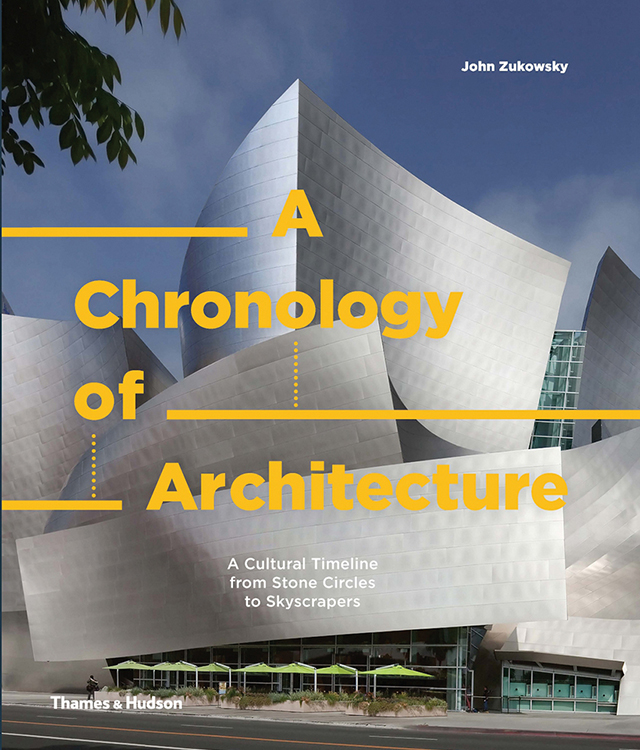A Chronology of Architecture
A Chronology of Architecture: A Cultural Timeline from Stone Circles to Skyscrapers
John Zukowsky
Thames & Hudson, January 2020Hardcover | 9 x 10-1/2 inches | 272 pages | 300+ illustrations | English | ISBN: 978-0500343562 | $29.95
PUBLISHER'S DESCRIPTION:
Roman architect and engineer Vitruvius defined architecture’s characteristics to include firmitas, utilitas, and venustas—essentially, structural integrity, usefulness, and beauty. Amazingly, all three Vitruvian characteristics can be found one way or another in most buildings and constructions from antiquity through the present.
A Chronology of Architecture is a groundbreaking survey that examines—together—engineering and architectural accomplishments. Sites are arranged within a sociocultural timeline that examines them in terms of historic events and trends, social change, economic developments, and technological innovations—factors that all helped shape architecture and engineering design solutions over millennia. The text is organized into seven chapters that chronicle these achievements and each chapter includes snappy “In Focus” sections that target sociocultural observations and technological developments related to particular sites and people.
A Chronology of Architecture is an invaluable and comprehensive overview of architecture’s history. This will be a wonderful resource for architecture lovers and for those who want to better understand the world around them.
John Zukowsky is an architectural historian and retired museum professional and the author of numerous books. He earned an MA and PhD in art and architectural history from Binghamton University, and has taught university-level courses in Chicago, New York, and Hamburg.
REFERRAL LINKS:
What is the best way of presenting the history of architecture? Traditionally, history books work chronologically and geographically, starting with the Egyptians and other ancient societies and ending close to the present day, with modern and contemporary architecture. These histories have been almost exclusively Western, focusing on Europe and the spread of its ideals to the United States and a select few places around the world, such as Japan and Australia. Recently though, scholarship has broadened to encompass other parts of the globe across sweeping architectural histories, most notably the 21st edition of Sir Banister Fletcher's Global History of Architecture published late last year. Although that book, in its completely reworked text, intentionally aims to dismantle the Western dominance of previous editions, it could not abandon the chronological format.
Ditto John Zukowsky's A Chronology of History, which makes dates an integral part of its structure, while at the same time intersecting them with thematic and geographical spreads that embrace a more global view of past architectures. The book spans 12,000 years in five chapters, but the first chapter covers 11,400 of them, from "nascent urbanism" to the late Middle Ages. A timeline is present along the bottom of most pages, though of course the one running throughout much of the first chapter has a much different scale than the rest of the book. Once the Renaissance is reached in the second chapter, the book locks into a format of twenty years per spread, a timeframe that compresses to five years per spread in the modern era (chapters four and five).
The themes and geographies happen in these spreads, such that the 1880s (third spread below) are discussed as "engineering marvels," with the Brooklyn Bridge, the longest at the time, alongside the Home Insurance Building, which was arguably the first skyscraper. Inserted between these pages, which basically read as captioned photos keyed to the steadily marching timeline, are spreads that delve deeper into particular histories, be it Palladio's Roman Revival, Regency England, or Frank Lloyd Wright and the Prairie School. As can be grasped in these examples, Zukowsky's history is not as global as the latest Fletcher, and there are few surprises in his quick tour of 12,000 years of architecture. But for students who are bad with dates, like I was, the ever-present timeline and bite-sized captions make for a history that is easy to follow. The addition of bubbles with non-architectural events is also helpful, putting architecture into larger contexts across time.
SPREADS:










